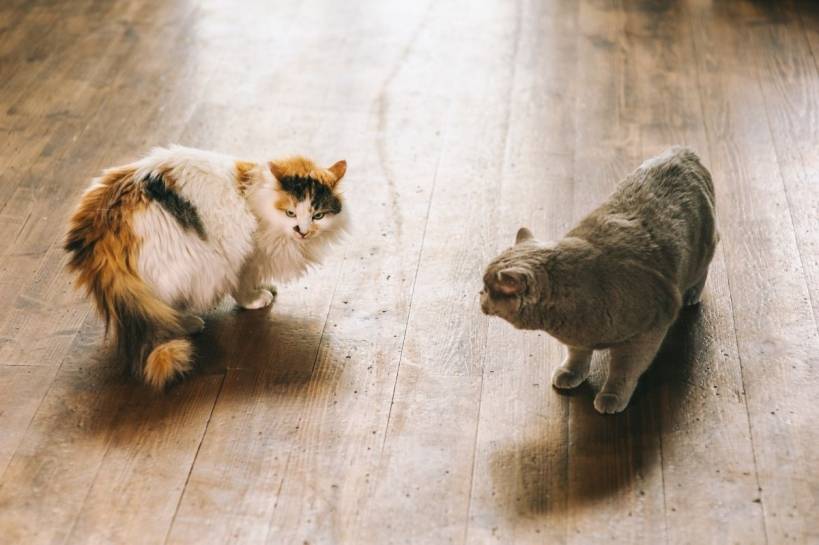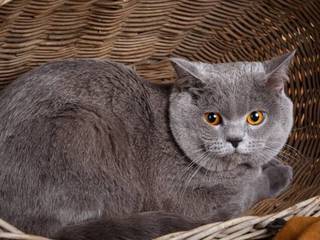Cat training can sometimes be difficult if you don't have the patience required to understand your feline. For some, dogs are easier to train while there are other people who would attest to the intelligence, and therefore easier training, of cats. If you are interested in owning a cat, training can help you learn how to understand your cat more. There are many aggressive cats as this is the natural tendency of all untamed cats. When you are successful in training them, you can make use of their other characteristics and enjoy having them in your household.
There are questions when it comes to the trainability of cats. But one thing is certain, you can enjoy having a cat if you understand what it wants and what it feels. You have to accept that cats are naturally independent. They are not like the other pets that need you in order to become accustomed to your house. With cats, you have to understand that they are very independent and self-reliant. For you to enjoy your cat, it is important to understand their aggression and use it to your advantage.
Aggressive cats can be trained when you understand why they act the way they do. When it comes to aggression, there are various levels of this. Some cats act aggressive when they want to play by practicing their stalking/hunting skills. There are others who act aggressive when they feel threatened in order to protect themselves. Other forms of aggression include misdirected aggression which is when the cat strikes out at someone who is not the direct reason for their discomfort, and territorial aggression which occurs when they feel their territory is threatened. It is important to know what type of aggression is felt by your cat so that you will know what to do about it.
Causes of cat aggression
The following are some of the causes of cat aggression; • Rough playing • Fear • Over-attention • Dominance • Maternal Aggression • Stressful living environment • Declawing • Lack of exercise • BoredomWays to deal with Aggressive cat The following are the ways to deal with your aggressive cats;
• Play Time
If your cat isn’t getting enough attention and play, then he will have a lot of pent up energy that has to be released. This can come out in the form of aggression: such as randomly hissing and clawing at you, attacking other pets, or meowing non-stop at night. Cats do this because they simply don’t know how to release all their extra energy unless you show them how. You have a lot of options for cat play times. A cat wand toy with a feather or squeaky ball on the end can be entrancing for your pet.• Calming Herbal Products and Plugins
Many cat experts recommend calming herbal products and plugins that release a calming scent in the room. Some herbal plugins imitate a cat’s natural calming pheromones. Set these up in the rooms where your cat’s having the most problems. For example, if he gets anxious and aggressive in the living room, set up a plugin there. The calming scent signals to kitty that everything’s OK.• Distract Strays
Your cat may get anxious and aggressive if another stray cat is wandering outside. This cat’s scent, which he can notice even inside your house, makes your cat feel like his home is in danger. Imagine if a strange person was circling your property and looking inside. You would feel anxious and aggressive too!• Give the cat some space.
While it's important to make sure the cat is stimulated by its environment, an aggressive cat is unlikely to want to socialize with people. She needs space to learn trust. Rather than dangling a toy in the cat's face, don't try to enforce playtime unless the cat seems to enjoy it. When entering the room with an aggressive cat, avoid eye contact and make sure the cat has have a clear escape route. Do not approach an aggressive cat unless necessary; it's better to let the cat come to you.• Pay close attention to your cat's body language.
Some cats are easily overstimulated, and their play can escalate into aggression. To a cat, play is connected to how it learns to hunt. Play aggression is the most common type of aggressive behavior owners see in their cats. It’s believed that through play with each other, young cats learn to inhibit their bites and sheathe their claws when swatting.• Spend at least twenty minutes with your cat, twice a day.
Forty minutes is not that long for a person. It means a lot for the relationship between you and your cat. This will enhance the bond between you and your pet, and help your cat work out some energy. For a truly aggressive cat you just need to be in the room, lying on the floor, eyes closed, with treats around you. This gives your cat time to build the confidence to know you are not a threat.• Use food to reward your cat for non-aggressive behavior.
Cats will normally associate feeding with positive feelings, and so food can be used as a reward to help condition their behavior.• Don't physically punish your cat for lashing out.
Even yelling at it can make the problem worse. Teach your cat to be calm by remaining calm yourself. Aggression on your part can result in additional aggression form your cat.• Resolve or alleviate their pain.
This is the best way to manage aggression when it stems from illness or trauma. Pain-induced aggression is triggered by pain, frustration or deprivation, and can be directed toward people, animals and objects. Any animal including humans can aggress when in pain.• Handle sick cats as gently as possible.
Wear gloves if necessary, and give them food treats so that they associate your touch with a tasty reward. If they act aggressive while you are handling them, do not reward with kind words and petting; this demonstrates that aggressive behavior is acceptable. Remain calm, and this will help keep them calm.





